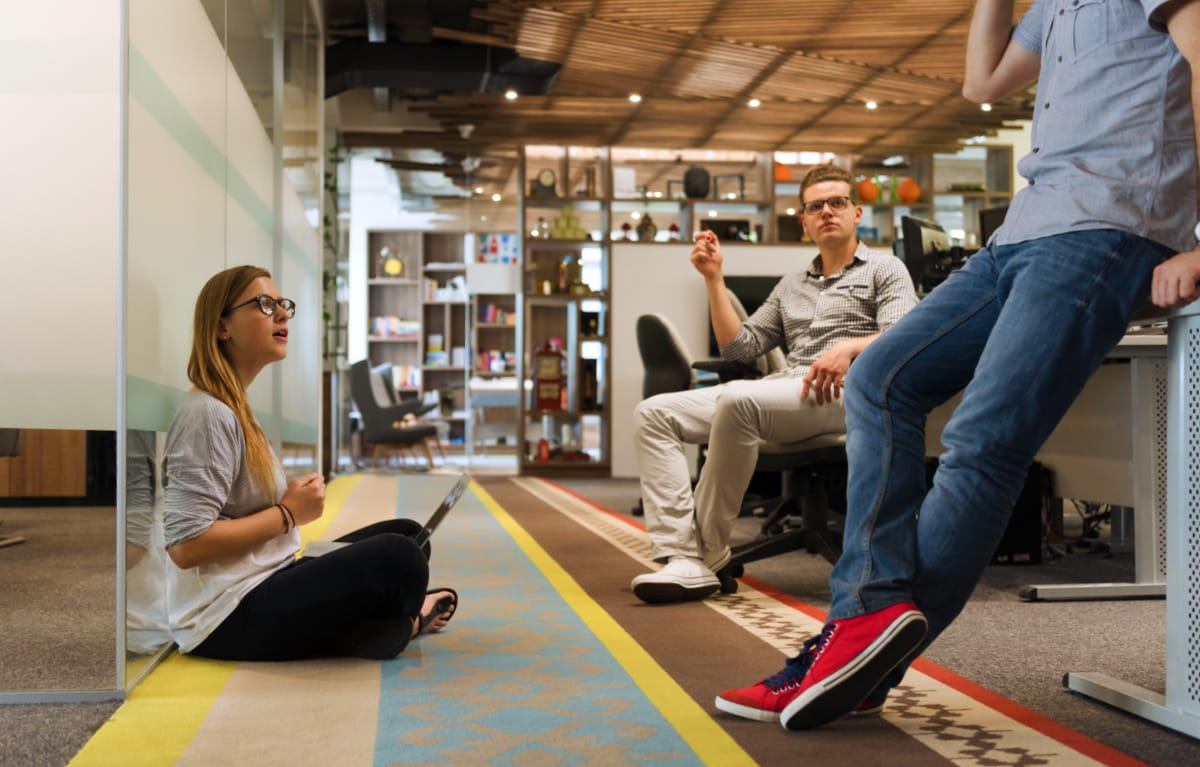Wychwood Blog
Neurodiversity in the Workplace - 10 Flooring Considerations

Designing workspaces for neurodiverse employees goes beyond aesthetics. It's about creating environments that cater to a wide range of sensory needs, especially for those
with conditions like autism, ADHD, and sensory processing disorders.
As a major element of any interior, flooring significantly impacts the sensory experience of a workspace. With careful selection, your flooring can help manage sensory overload and create a more inclusive environment. Here are 10 key factors to consider when choosing flooring for a neuro-inclusive workplace:
- Sound Matters: Hard surfaces like tile or hardwood can amplify noise, which can be overwhelming for some. Look for flooring with good acoustic properties, like cushioned carpet tiles or luxury vinyl tiles with acoustic enhancements, to absorb sound and create a quieter workspace. There are more specialised underlays coming onto the market to reduce noise.
- Colour and Pattern: Bright, bold patterns can be stimulating but also overwhelming. Opt for calming colours found in nature, like neutrals and muted tones. Avoid busy geometric patterns and stripes, and consider incorporating flowing, organic designs.
- Texture Matters: Rough or overly textured surfaces can be uncomfortable, while excessively smooth ones can be unsettling. Aim for a balanced texture, like that of low-pile carpet, LVT, or smooth cork.
- Durability and Easy Care: Workspaces need to be both functional and long-lasting. High-performance modular carpet or luxury vinyl tile offers a good balance of durability and easy maintenance.
- Zoning with Flooring: Use flooring to define different areas within the workspace, such as quiet zones or areas with different acoustic characteristics. Consider using subtle colour or texture variations to create a sense of flow and avoid jarring transitions.
- Flexibility is Key: Modular flooring systems, like carpet tiles or LVT, allow for easy reconfiguration, which is essential in a neuro-inclusive environment where needs may change over time.
- Safety First: Choose slip-resistant flooring materials like carpet tiles, textured LVT, or rubber to prevent falls, which can be particularly concerning for individuals with coordination challenges.
- Light Reflectance: Shiny surfaces can be distracting. Opt for materials with lower light reflectance values, like carpet tiles or matt-finish LVT.
- Environmental Impact: Prioritise sustainability by choosing flooring with high recycled content, low VOCs, and a strong potential for reuse.
- Thermal Comfort: Consider flooring materials that retain warmth, such as LVT, which can also be used with underfloor heating to maintain a comfortable temperature.
By carefully considering these factors, you can create a flooring solution that supports neurodiversity and enhances the well-being of all employees.
You might also be interested in:
- How to Design a Neuro-Inclusive Workplace
- 10 Neurodiversity at Work Statistics
This revised version aims for a more friendly and engaging tone while maintaining professionalism.
Comments are switched off for this blog.